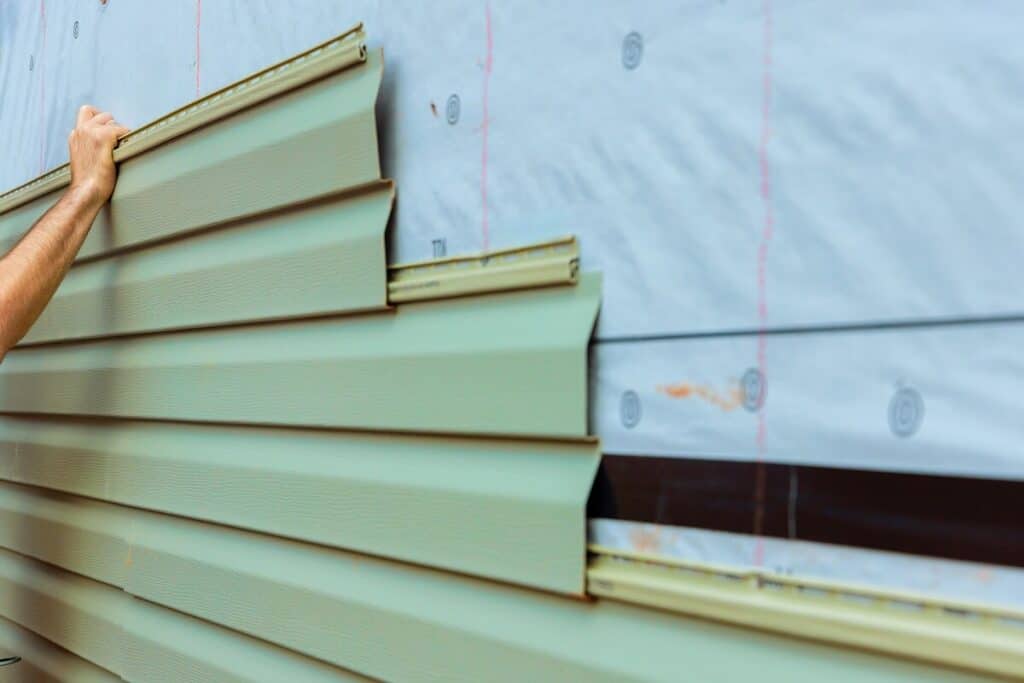Home siding is an essential component of any residential property, serving not only as an aesthetic feature but also as a protective layer that shields the interior of the house from external elements. While homeowners have a wide range of options to choose from when it comes to home siding, such as wood, vinyl, fiber cement, and metal, the longevity and quality of the material are two critical factors that must be considered. Vinyl siding replacement, for example, will last for decades and requires a minimal amount of maintenance.
Factors That Affect the Longevity and Quality of Home Siding
Material Type
The type of material used for home siding is a significant factor that determines its longevity and quality. As mentioned earlier, there are various materials to choose from, and each has its unique characteristics. There are several options available when it comes to choosing a durable siding material for your home. To illustrate, let’s take a look at the four most popular types of siding:
Fiber Cement Siding
Fiber cement, or fiber composite, is a popular option due to its durability and ability to withstand harsh weather conditions. This siding material is made from a combination of cement, sand, and cellulose fibers, which makes it resistant to moisture, fire, insects, and rot.
Fiber cement siding is available in various styles, including lap siding, shingle siding, and vertical siding. It can be painted in a wide range of colors, and some manufacturers offer pre-painted options that are resistant to fading.
Metal Siding
Metal siding is another durable option that is resistant to moisture, fire, insects, and rot. This siding material is available in several types of metal, including aluminum, steel, and zinc.
Metal siding is known for its strength and ability to withstand high winds and impact damage. It is also low-maintenance and easy to clean. However, some types of metal siding may be prone to rust and corrosion, so it is essential to choose a high-quality material that is treated to prevent these issues.
Brick Siding
Brick masonry is a traditional option that is known for its durability and longevity. This siding material is made from fired clay, which makes it resistant to fire, insects, and rot.
Brick siding is also a good insulator, which can help reduce energy costs and improve the comfort of your home. It is available in several styles, including solid brick, veneer brick, and brick panels.
Vinyl Siding
Vinyl siding comes in a variety of colors and styles, allowing you to create a fresh, modern look for your home. Vinyl siding can help improve your home’s energy efficiency by reducing heat loss in the winter and heat gain in the summer. This can result in lower energy bills and a more comfortable living space. Vinyl siding is relatively low maintenance and is resistant to rot, insect damage, and weathering. To top it all off, vinyl siding is also one of the most economical siding materials available.
Installation Method
The installation method used for home siding is another crucial factor that affects its longevity and quality. Improper installation can lead to water infiltration, which can cause rotting, mold growth, and other forms of damage.
When installing home siding, it is crucial to ensure that the surface is properly prepared, and the siding is correctly fastened and sealed. Additionally, the use of quality materials such as weather-resistant barriers, flashing, and caulking can help prevent water infiltration and ensure that the siding lasts longer.
Weather Conditions
Weather conditions are another significant factor that affects the longevity and quality of home siding. Different types of siding materials react differently to weather conditions, and some may be more suitable for certain climates than others.
As examples, wood siding is not suitable for areas with high humidity or frequent rainfall, as it is prone to moisture damage. On the other hand, metal siding may not be suitable for areas with high winds, as it can be easily dented or damaged.
Maintenance
The maintenance required for home siding is another factor that affects its longevity and quality. Some siding materials require more maintenance than others, and failure to properly maintain the siding can lead to premature aging and damage.
For instance, wood siding requires regular painting or staining to protect it from moisture and insect damage. Vinyl siding, on the other hand, requires minimal maintenance, as it is resistant to rotting, insect damage, and fading.
Factors That Contribute to the Longevity and Quality of Home Siding
Proper Installation
As mentioned earlier, proper installation is crucial for the longevity and quality of home siding. It is essential to ensure that the siding is installed correctly, using quality materials and following the manufacturer’s instructions.
Proper installation can help prevent water infiltration, which is one of the primary causes of siding damage. Additionally, it can help ensure that the siding is well-sealed and able to withstand harsh weather conditions.
Regular Maintenance
Regular maintenance is also crucial for the longevity and quality of home siding. Maintaining the siding involves cleaning it regularly, inspecting it for damage, and repairing any issues promptly.
Regular cleaning can help prevent the buildup of dirt, debris, and other materials that can cause damage to the siding. Regular inspections can help identify any damage early, allowing for prompt repairs that can prevent further damage.
Weather-Resistant Materials
Using weather-resistant materials is another factor that contributes to the longevity and quality of home siding. Weather-resistant materials
- Aluminum – Aluminum siding can last between 20 to 50 years.
- Brick and Stone – Clay brick or natural stone can last for hundreds of years if properly cared for.
- Fiber Composite – Fiber cement siding can last between 25 to 40 years or longer.
- Wood – Wood siding can last between 10 to 100 years, depending on the type of wood, how well it is maintained, and the climate.
- Vinyl – Vinyl siding typically lasts between 20 to 40 years. If your vinyl siding is showing signs of damage or wear and tear, it may be time to replace it.
Peak Roofing & Exteriors
If you’re looking for an honest and experienced team that can handle your skylight project in Northwest Arkansas, Northeast Louisiana, or West Texas, look no further. Peak Roofing & Exteriors can take care of your home or business with quality and integrity. Contact us today and book a FREE inspection!

